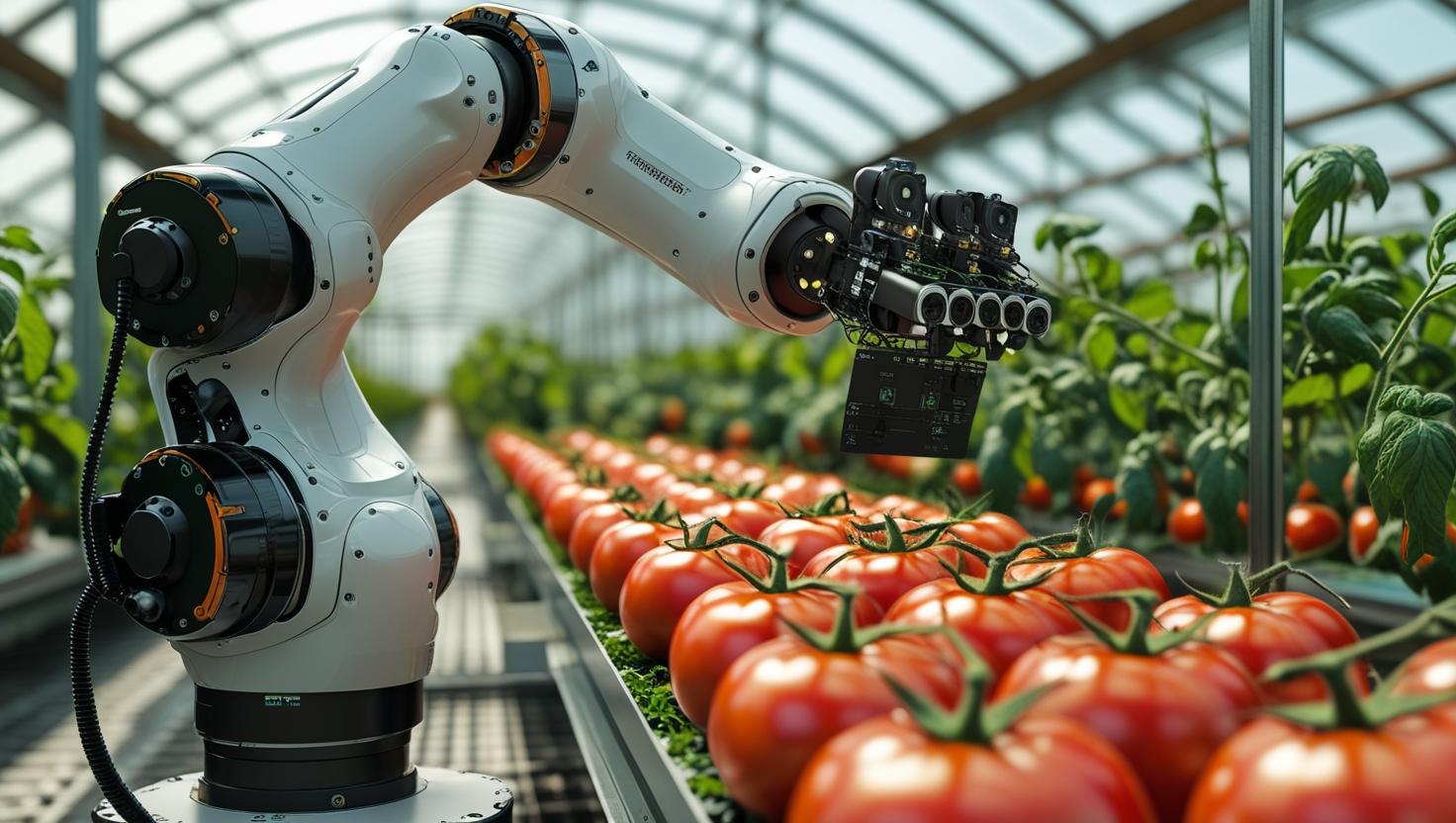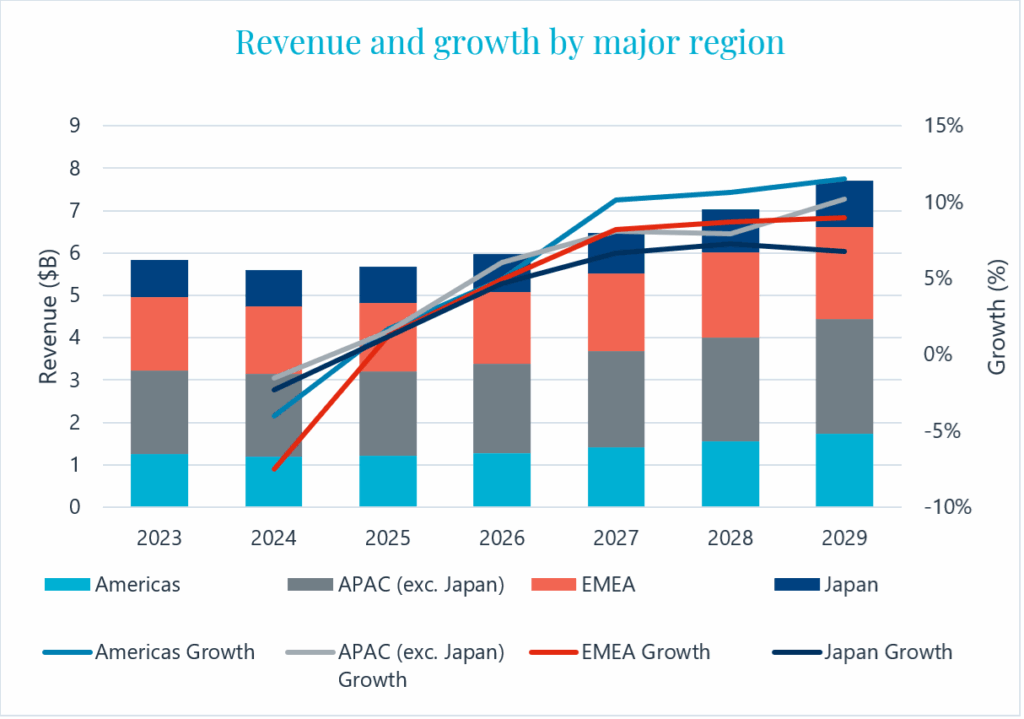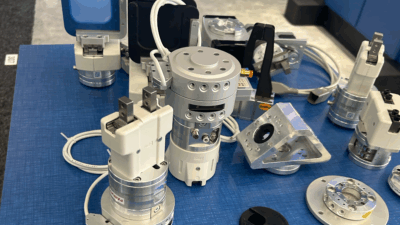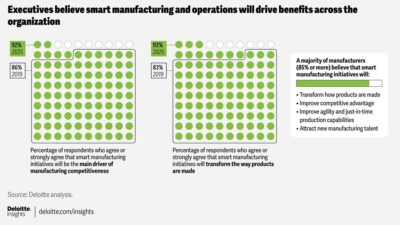Although the machine vision market experienced a tough couple of years in 2023 and 2024, it’s expected to grow strongly this decade, as more advanced technologies and new applications come online and the market develops.

The role of machine vision is expanding throughout industry as more applications continue to be developed, cameras and software become more advanced and easier to use and costs fall.
However, currently the market remains fragmented, with a long list of component suppliers and system integrators active. As the market matures, we expect further consolidation, with companies making acquisitions and forming partnerships that build out their portfolio and enable them to supply more complete vision systems.
Our definition of machine vision includes industrial and non-industrial applications, “where a combination of hardware and software is used to provide operational guidance to devices in the execution of their functions based on the capture and processing of images.”
It’s important to note that our research and analysis does not cover basic barcode scanners, embedded vision devices, prosumer, closed circuit television and surveillance cameras.
Machine vision market predicted to rally
It’s been a tough couple of years for the sector, but the machine vision market is predicted to rally.
The global market for machine vision products had a tough 2024, declining by 3.9% from 2023. It was negatively impacted by the general economic slowdown, high interest rates stifling investment in new equipment and continued destocking at end customers, system integrators and distributors.
In 2025, we expect the global machine vision market to experience only marginal growth but expect it to pick up momentum in the mid- to long-term, increasing from $5.6 billion in 2024 to more than $7.7 billion by 2028.

Manufacturing and automation demand will drive machine vision growth
Growth in machine vision will be driven by rising manufacturing and automation demand and emerging markets. Sectors we forecast will perform particularly strongly include
- logistics in applications such as warehouse automation and bin-picking
- battery manufacturing
- agriculture, which has significant untapped potential for machine vision solutions
Advances in cameras and software to drive the market and new applications
Examining key trends in the machine vision market
There are some emerging trends in the machine vision market, including these five that are of note.
- Smart cameras are being used more widely, particularly within warehousing, and are becoming more sophisticated. They are ideally suited to less complex applications, and they tend to be far simpler to integrate, with a lower cost and more compactness compared to full vision systems. Meanwhile, machine vision systems with multiple cameras are being used for more tailored and sophisticated applications, such as those that require faster processing and throughput, or a larger spectrum of data to be analyzed.
- The ongoing, rapid development of higher speed and better solution cameras and more advanced software, alongside the growing use of AI and machine learning. The latter trend is particularly notable in sectors such as food and beverage where machine vision is playing a key role in reducing waste and improving consumer confidence.
- Companies increasingly purchasing products from different places and requiring system integrators to link them together to create complete machine vision solutions.
- The development of specialist applications and solutions for machine vision, in sectors such as recycling and defense. We think there are possible untapped opportunities. For example, we are hearing about small start-ups, including those established by recent university graduates creating niche solutions.
- The market is consolidating in some areas, with companies making acquisitions and creating partnerships to expand their portfolios and create fuller vision systems. However, there is still fragmentation as machine vision systems are used increasingly widely and technologies, such as high-speed infrared and short-wave infrared, offer new applications in areas such as recycling and defense. Robotics is a wide but gray area, in which there are huge variations between the types of vision systems and quality of cameras used.
As machine vision gets sophisticated, the market will grow
Machine vision is a growing market and is expected to become increasingly sophisticated over the coming years, through the development of the capabilities of both cameras and software. We predict further acquisitions as companies attempt to gain a competitive advantage, as well as widespread use of AI and machine learning capabilities making systems easier to deploy, program and use. Machine vision is suitable for all industries and has a very wide range of potential applications, with new ones being developed all the time. The warehouse and logistics sector is currently experiencing particularly strong growth, and vision is already widely used in advanced manufacturing industries, such as automotive and semiconductors for detection of things like defects, barcode recognition and alignment. As both the market and the technology become more sophisticated, we predict a bright future for machine vision.
Tim Dawson is the vice president of Interact Analysis. Edited by Sheri Kasprzak, Managing Editor, WTWH Media, [email protected].



